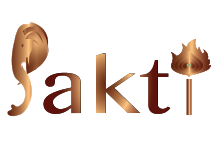Gives good blood circulation in the feet, calf muscles, back of the knees, hamstrings, buttocks, lower back
Other variations in Vajrasana are Uttitha Vajrasana, Parvritti Vajrasana[1]
Caution
If you are having lower body especially knee, feet problems this asana has to be done cautiously without damaging the already week body parts.
You may use seat cushions to rest your buttocks or knees for support to get into asana in initial stages.
Getting in to the Posture
Relax in a sitting posture and prepare yourself to change posture to Vajrasana.
Contemplate on the posture, get a mental picture.
With a Sankalpa to purify body and mind with the help of the asana.
From the seated posture, extend(stretch) the legs
Palms side of the hip.
Bend the right leg and place the right foot under right buttock
Similarly the left side.
Now sit up erect and adjust buttocks to rest on the instep (medial) of the feet.
Now stand on the knees to adjust them together and not creating much gap between the feet.
Hands rested on the upper leg with any hand mudra.
This is the posture of Vajrasana.
Being in the Posture
Become aware of the erect spine.Stretched from tailbone to the neck. Chin Up.
Lift the chest up.
Drop the shoulders to let go of any tension.
Seated on the soles of the feet.
Dorsal part of the feet touching the ground.
Bent upper leg cushioning the calf muscles.
Stay for few seconds or minutes as long as you are comfortable without any uneasiness.
Breathing
Observe the abdominal, mid chest and clavicular regions expanding and contracting.
Vajrasana posture allows for the maximum unrestricted breathing to take place comparatively to other common seated postures.
Getting out of the Posture
Release the hands.
Place Left hand to side of the hip on the ground, tilt the body to left to stretch the right leg.
Similarly with right palm on the ground to the side of the body tilt to the right to stretch the left leg.
Relax the body with stretched legs and hands behind, palms on the ground.
Relax the neck with few lateral movements of the head.
Observe the body especially the body parts which were active in the previous posture.
Notice the small sensations occurring in these parts while they are relaxed.
Resources
1.Dr.Swami Gitananda Giri, Pondicherry
